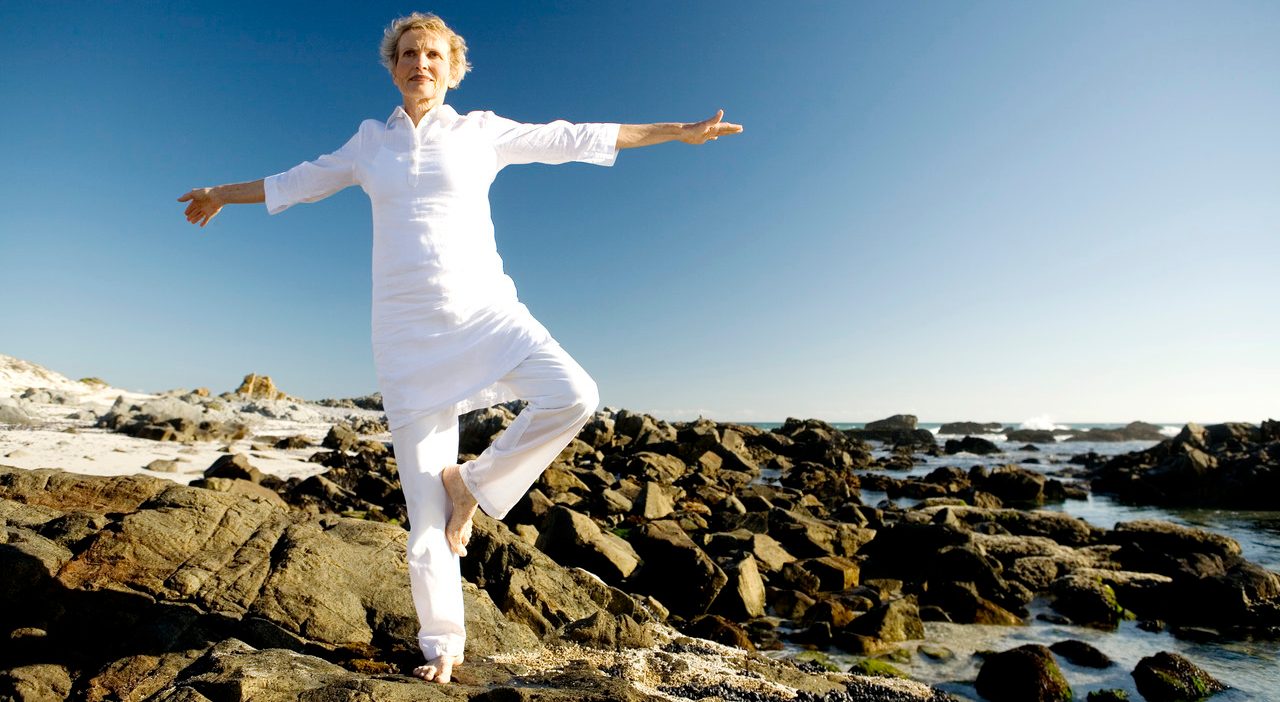The Yoga Stork Pose Helps Prevent Falls

Balance tends to decline with age, especially after 60. A yoga pose, the stork, will help you prevent falls and gain confidence. Here's what you should know.
The “stork” is a classic yoga move: You stand on one leg with your other leg pressed against your calf or thigh. When storks and flamingos (and even chickens) do this, we see only one leg, the other tucked under their feathers. The pose promotes mindfulness as you concentrate, helps you improve your balance, and may alert you to issues that could increase your chance of a hip fracture or stroke.
YOU MIGHT ALSO LIKE: The Benefits of Yoga for Seniors
Do you have an uneven gait?
Many people find that the stork is easier to do on one side than the other. If one leg is much stronger, you may be favoring it when you walk, which could be important if you are developing back or leg pains.
Balance tends to decline with age, especially after age 60. When elderly people fall, they are more likely to hurt their heads or fracture a hip, and they may be demoralized if they lose their independence even for a limited time.
You can prevent that by fall-proofing your home.
A one-leg standing test could provide a needed push. In one study of 351 women ages 69 to 79, researchers asked participants to stand on one leg for up to 30 seconds with their eyes open. The chance of a hip fracture dropped by 5 percent for every second they could stand on one leg. You can watch a trainer walk you through the test here.
How much balance training do you need?
One review study found that doing three 10- to 15-minute balance training sessions a week for about three months improved balance in healthy young people. If your balance is poor, every little bit will probably help. Silver Sneakers, the Medicare-sponsored program, suggests six balance exercises for seniors, including an easier stork. Some of these you can do while waiting for your food to heat in the microwave or while talking on the phone.
If it’s a struggle to balance on either side for at least 20 seconds, you might consider asking a doctor to evaluate your risk of stroke. According to research reported by the American Heart Association, people who couldn’t pass this test were more likely to have damage to small blood vessels in their brains even if they had no other symptoms.
The researchers asked 841 women and 546 men, who on average were 67, to stand on one leg with their eyes open for up to 60 seconds. Each participant tried twice; the better of the two times was used in the analysis. The team then gave each participant a brain MRI to see signs of small blood vessel disease.
It turned out that about a third of participants who had at least two negative blood vessel signs — two “microbleeds” or two “lacunar infarctions” — had trouble balancing for 20 seconds. Around 15 percent of people with only one lacunar infarction or microbleed had trouble balancing that long. Short one-legged standing time was also linked to lower scores on a cognitive test.
Before you balance on one leg, immediately keel over, and panic, you should know that the interpretation of such MRI results isn’t obvious. Many elderly people who live independently will show signs of a microbleed if tested. It’s also not clear whether microbleeds directly interfere with brain function, as you might guess from the lower scores on cognitive tests. Similarly, the correct interpretation of a lacunar infarction result on a MRI isn’t crystal clear.
If you are concerned about your risk of stroke, beyond talking to your doctor, adopt preventive measures that are generally good for health. Quit smoking, lose extra weight, treat diabetes and irregular heartbeats, exercise more, and take recommended steps to lower your blood pressure.
You might also consider taking a daily baby aspirin if you’re in your 40s or 50s, but the U.S. Preventive Services Task Force does not recommend starting daily aspirin if you’re 60 or older.
Updated:
July 21, 2022
Reviewed By:
Janet O’Dell, RN